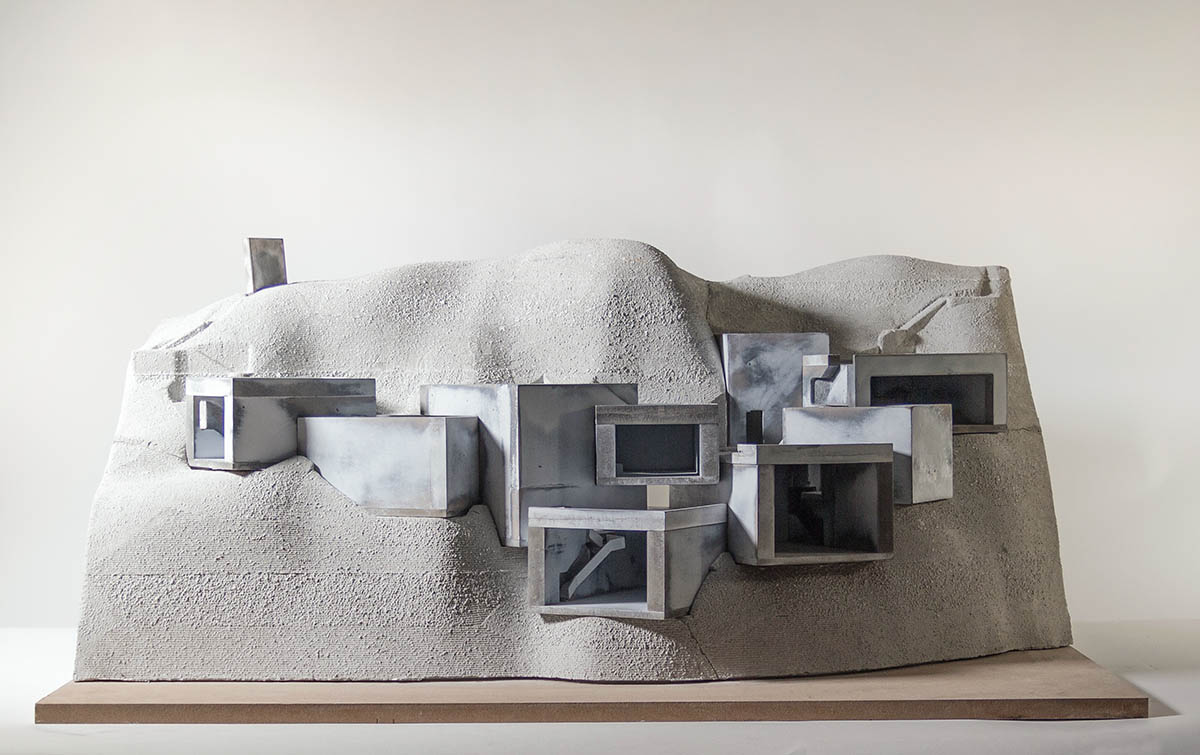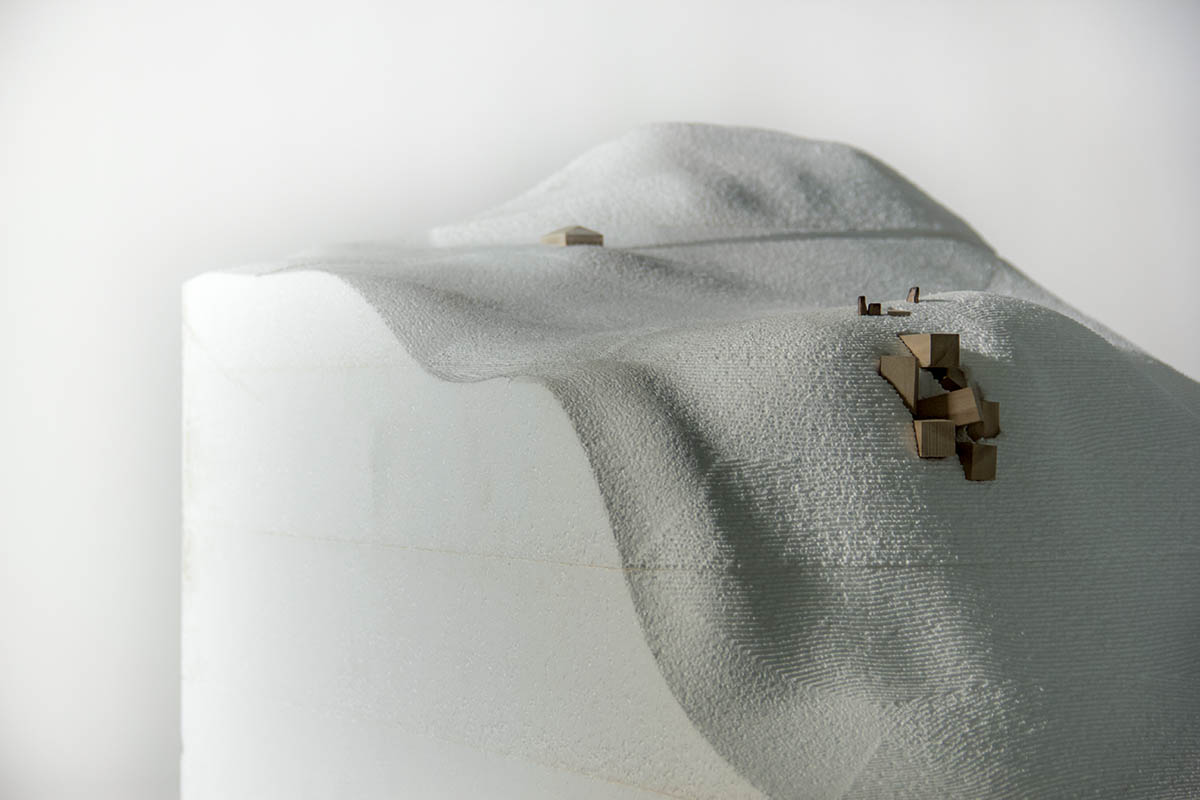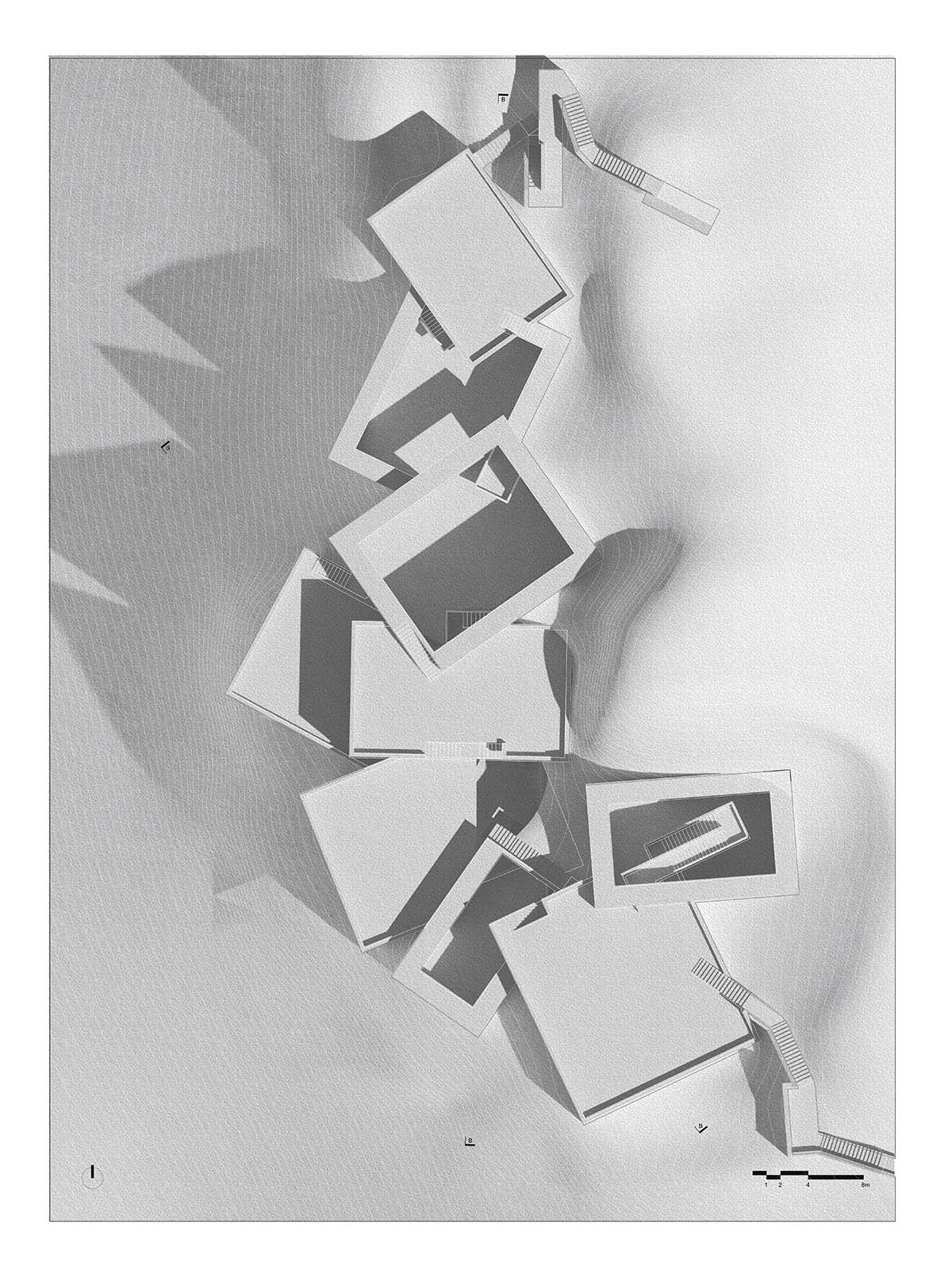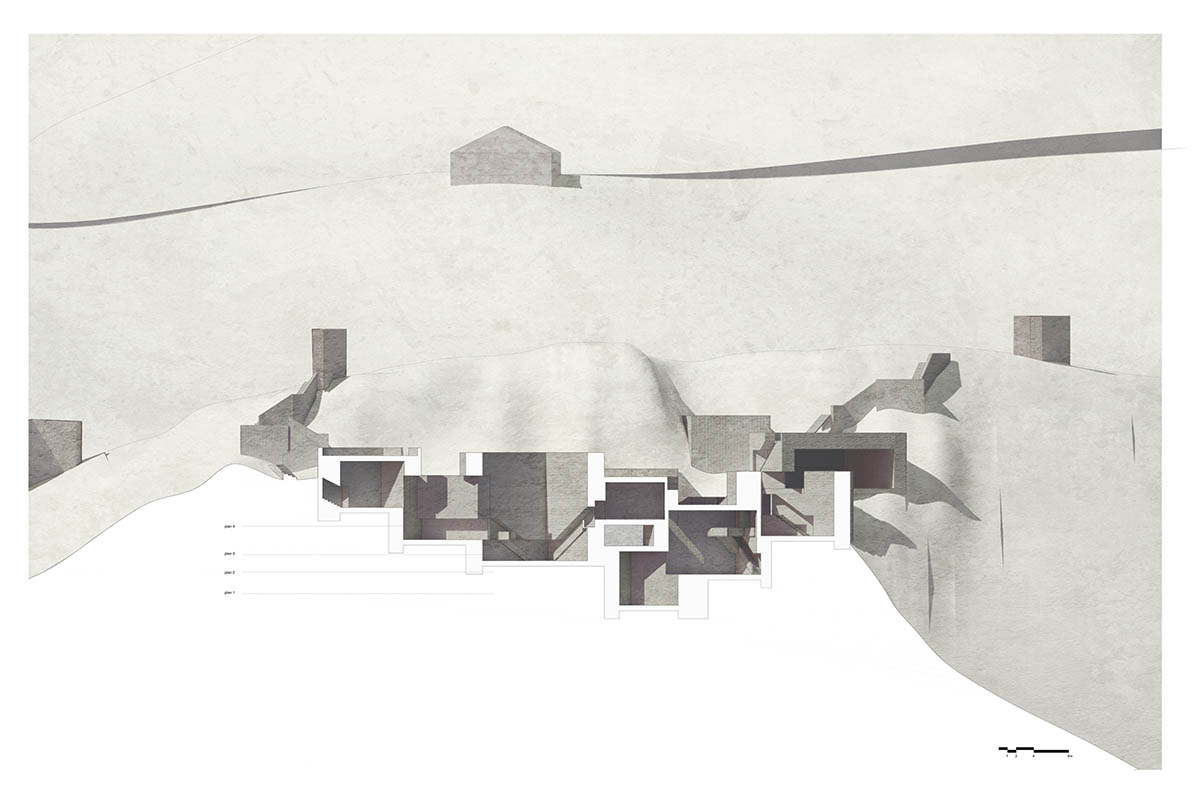Tibet Contemporary – Outside/In_Between

by Morgan Starkey (MArch ’19)
The unending cycle of death and rebirth, the “Wheel of Life”, is a fundamental assumption in Tibet. Referring to the the aimless wandering existence in the material world, this conception of time has become central to their traditional art and iconography where wrathful gods of “time” proliferate.
In the West, the most recognizable Tibetan text is the Bardo Thodol (Tibetan Book of the Dead) translating directly to “Liberation through Hearing in the Intermediate State”. Bardo, or the “in-between state”, refers to the liminal phase of existence between two lives on earth. While many schools of Buddhism reject this condition, it is central to Tibetan Buddhism. Appropriately, the Tibetans have focused on the “in-between” state of life as so much about their existence is found “in-between”. Sitting on the roof of the world at the collision of two continents, Tibet marked a flow of ideas and information exchanged between China and India forming an almost hybridic culture. In modern times they have had to negotiate their relationship between these two rising economic giants as their land has become the link in-between, where trade routes and and railways are being established.
Tibet itself is now in a transitional state between a traditional way of life and the intrusion of modernity. Philosophically, Tibet has almost opposed change and growth, absorbing any accumulation of knowledge as merely tacit wisdom back into a mundane cyclical existence waiting for the next incarnation. In this way, Tibet has existed outside of time, in a space in-between the mental and physical, between the real and the imaginary. Foucault may have called this Tibet a heterotopia of time, existing outside of time and insusceptible to its ravages, just as he describes museums and libraries in his 1967 essay, Of Other Spaces:
“Museums and libraries have become heterotopias in which time never stops building up and topping its own summit… By contrast, the idea of accumulating everything, of establishing a sort of general archive, the will to enclose in one place all times, all epochs, all forms, all tastes, the idea of constituting a place of all times that is itself outside of time and inaccessible to its ravages, the project of organizing in this way a sort of perpetual and indefinite accumulation of time in an immobile place, this whole idea belongs to our modernity.”
Museums represent permanence, a crystallization of singular moments in history and humanity’s advances through the accumulation of knowledge. Simultaneously, they also represent cyclicality in that the reason we connect with the past is that we can read a timeless human condition into any artifact. Museums, like Tibet at large, serve as an in between state: between singular permanence and cyclicality.
With few proper Museums in Tibet, the region is due for more spaces of reflection that memorialize the unique experience of the Tibetan people. This contemporary museum and library of ancient scripts will be a place of exchange, where tourists learn about locals and vice versa. Where tourists are not only present to consume, but are encouraged to use the space to hold programs and seminars. Just as Tibet has served as the link between so many things in our world, this Museum/Library will serve as another type of link, between tradition and modernity, local and tourist, between permanence and impermanence, and most importantly between this life and the next.


